Sapphire Laser Head and Base Plate
In this write-up, we’ll take a deep dive into the Coherent Sapphire laser series “personality module” (also known as the OPS Headboard) as well as other aspects of the laser driver/control system. This is the information Coherent really doesn’t want you to know, strap yourself in! The Sapphire series are one of Coherent’s flagship lasers. They use modern and advanced OPSL technology to generate nearly any wavelength of laser light. They have numerous applications and are available in a wide variety of power levels and wavelengths. Sapphire lasers have excellent beam characteristics and are very reliable. They're often used in laboratory settings, medical devices, and many highly-specialized scientific applications. To ensure the Sapphire is not only operational, but reliable too, it's critical that several optical components are monitored and kept at the appropriate temperature. This includes the pump laser diode, BRF, SHG, etc. Additionally, the laser diode requires precise current control to operate effectively. The entire optical table (ceramic substrate) contained within the head is also actively cooled via a TEC. The Sapphire is an advanced laser system with many different electronic components that need to be monitored and controlled. Unlike most laser systems that just use a laser driver, the Sapphire splits these duties between the Sapphire OEM controller (laser driver), and the personality module contained within the laser head. The Sapphire OEM controller is connected to the laser head directly via the DB-25 connector or with a cable. We will cover the OEM controller in this write up, but plan to focus more heavily on the personality module (PM). Below is an image of a Sapphire laser head with the top cover removed to expose the PM.
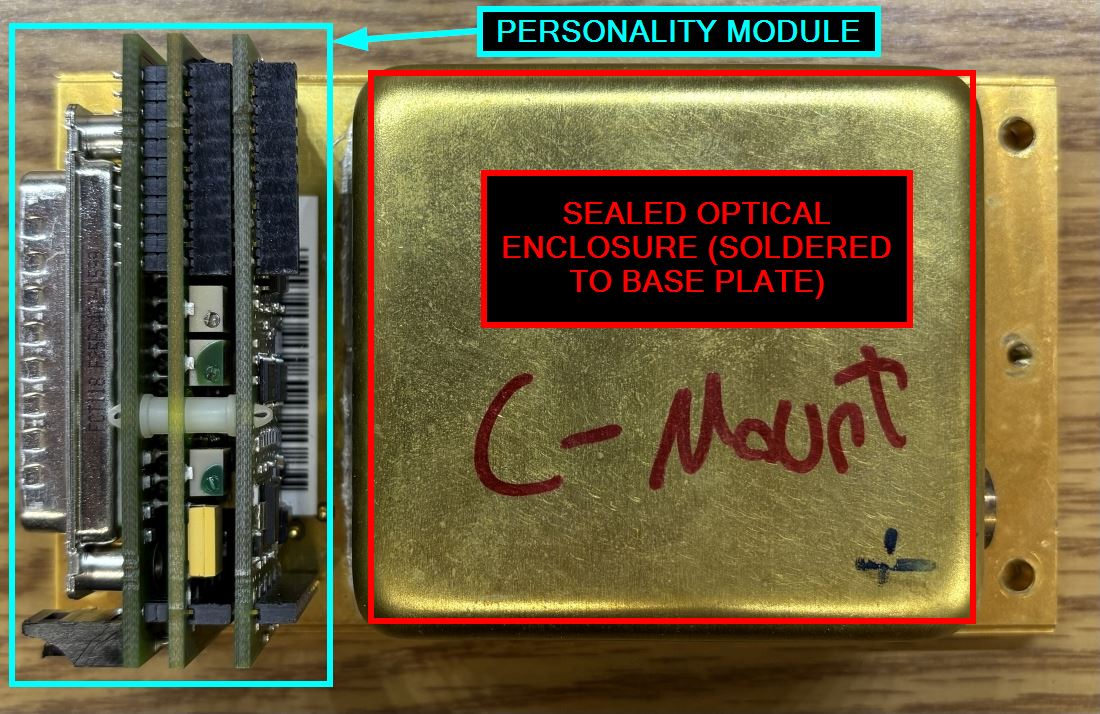
Below is an image of the Sapphire laser head with covers removed and the PM removed to expose the connector. This connector is a single-row pin header connector to which the PM board stack plugs in to. We have analyzed the connections and provided a pin-out.
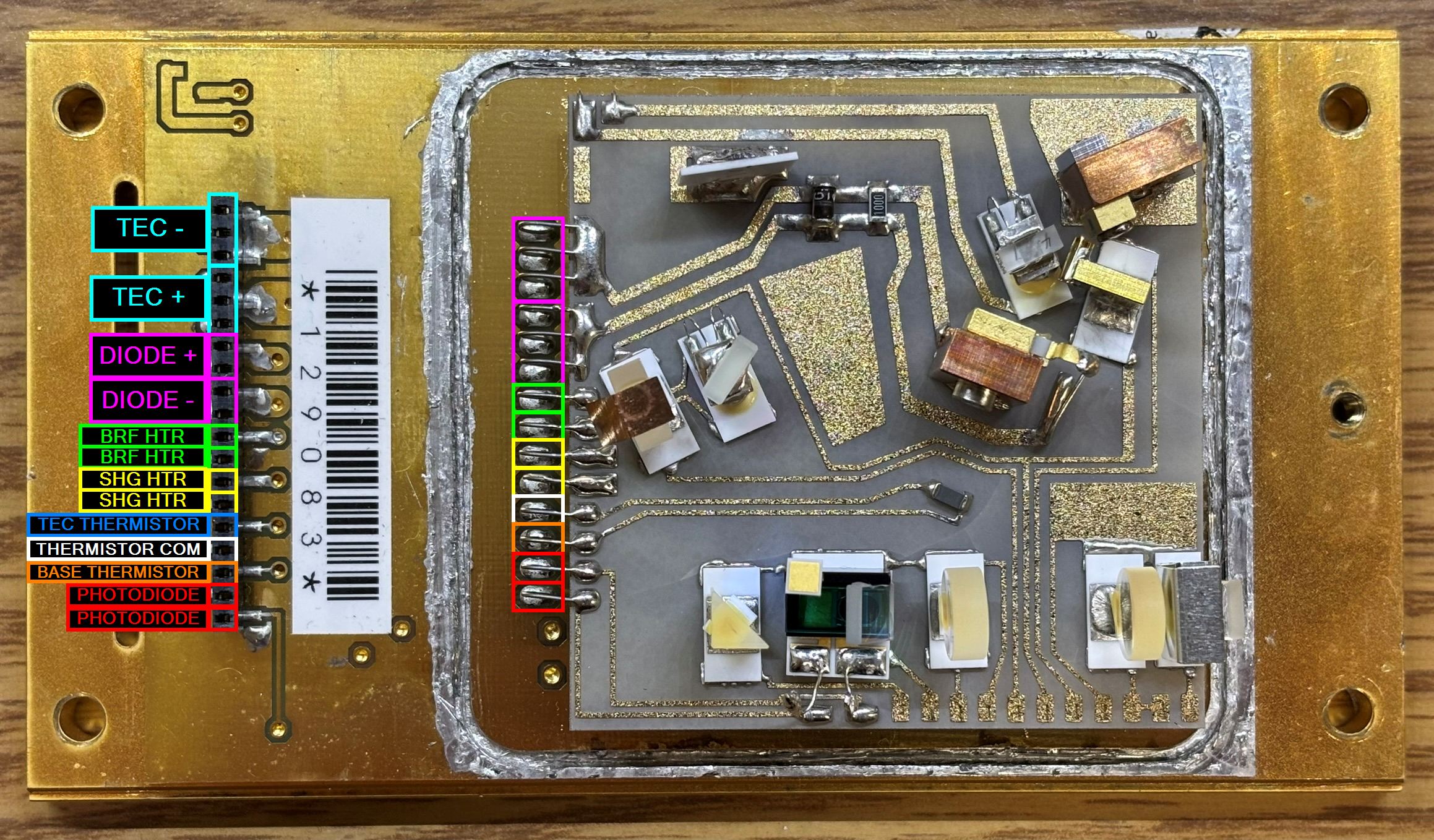
The TEC is located between the ceramic substrate and the metal base plate. The image below shows these components inside of a damaged Sapphire where the TEC has separated from the base plate due to shipping damage.
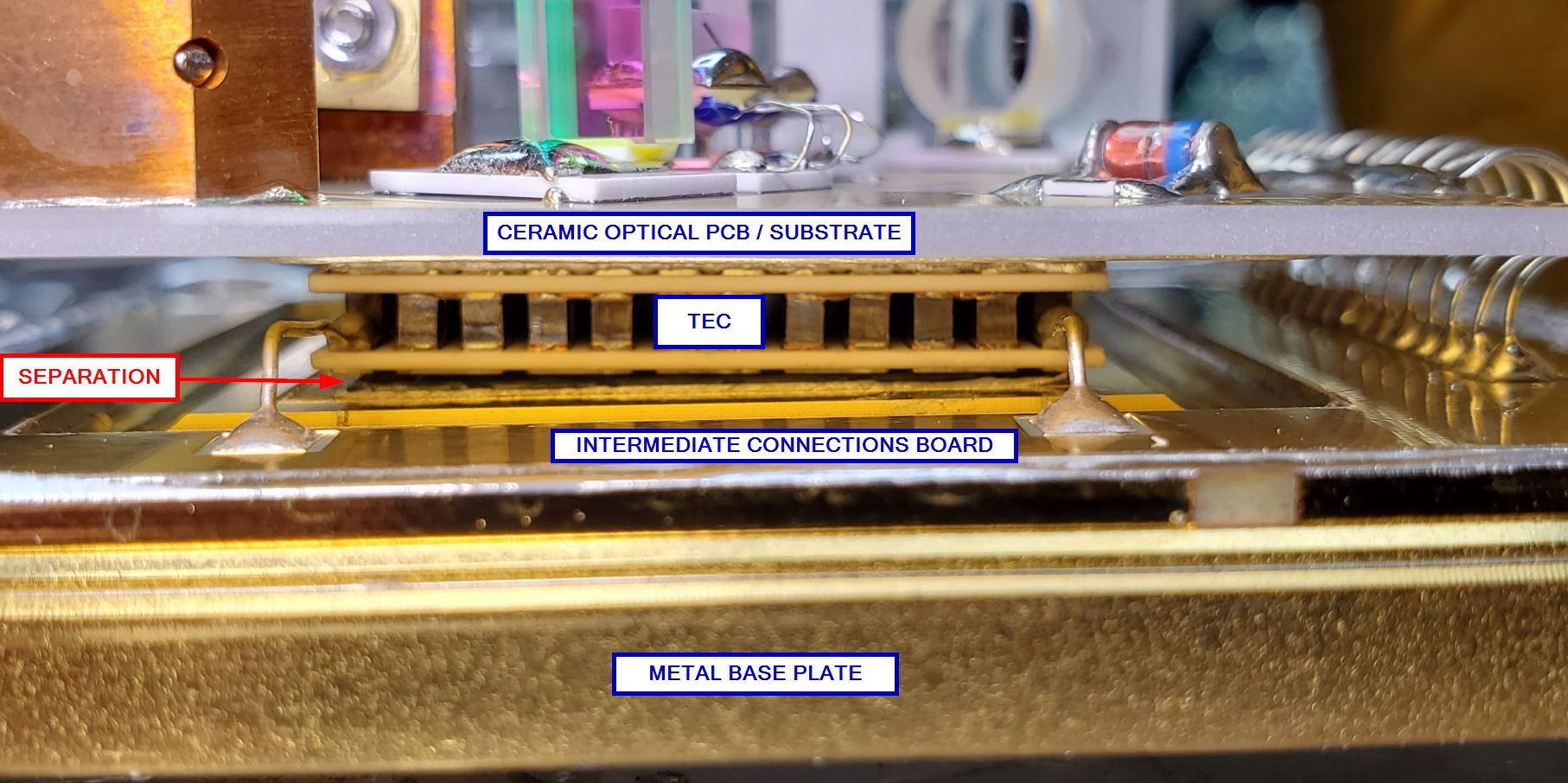
To learn more about the optical beam path and components of the Sapphire laser head, please check out the following pages on this website that go into the optical details of two different Sapphire models.
For reference, we have included an annotated image of a Sapphire 548 beam path below. Most Sapphire laser models will follow this optical configuration quite closely.
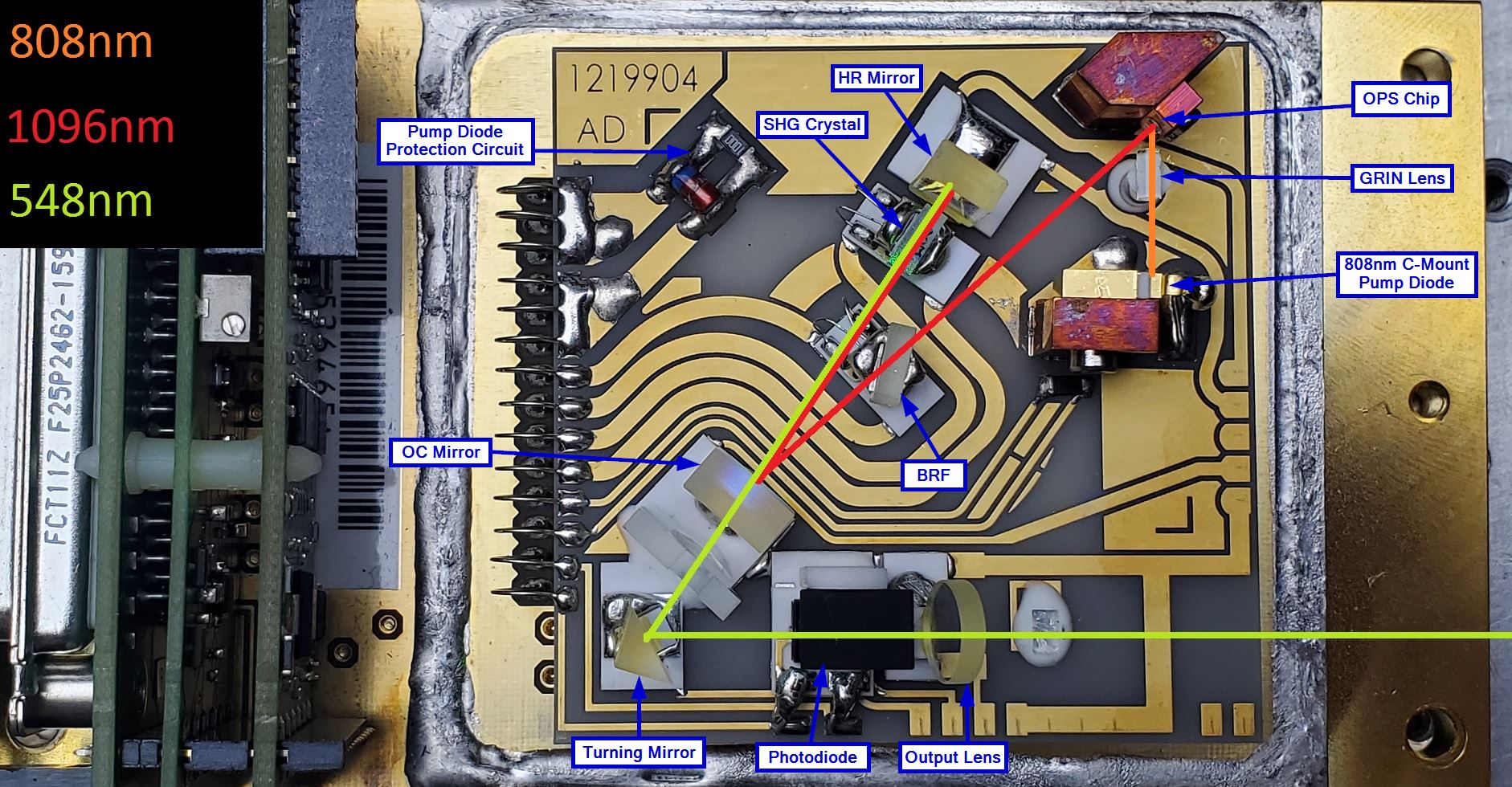
Sapphire Personality Module (OPS Headboard)
Contained within the Sapphire laser head, but not under the hermetically sealed optical enclosure, is a stack of small circuit boards. This assembly is called the personality module (PM). All coherent sapphire lasers are built in a similar manner, with only minor deviations in form factor, optical design, and bean delivery type. While there are different controller versions as well, the personality module remand relatively unchanged with different Sapphire models and variations. We believe that if we can understand and take control over the PM, it will make repairing and calibrating Sapphire lasers significantly more accessible to hobbyists and organizations looking to service their own systems. Firstly, what actually is the personality module and what role does it play. The personality module is essentially the last stage of regulation and control for the sensitive optical components contained within the laser head. The Sapphire controller does not interface directly with most of the optical components. These signals first pass through the PM.
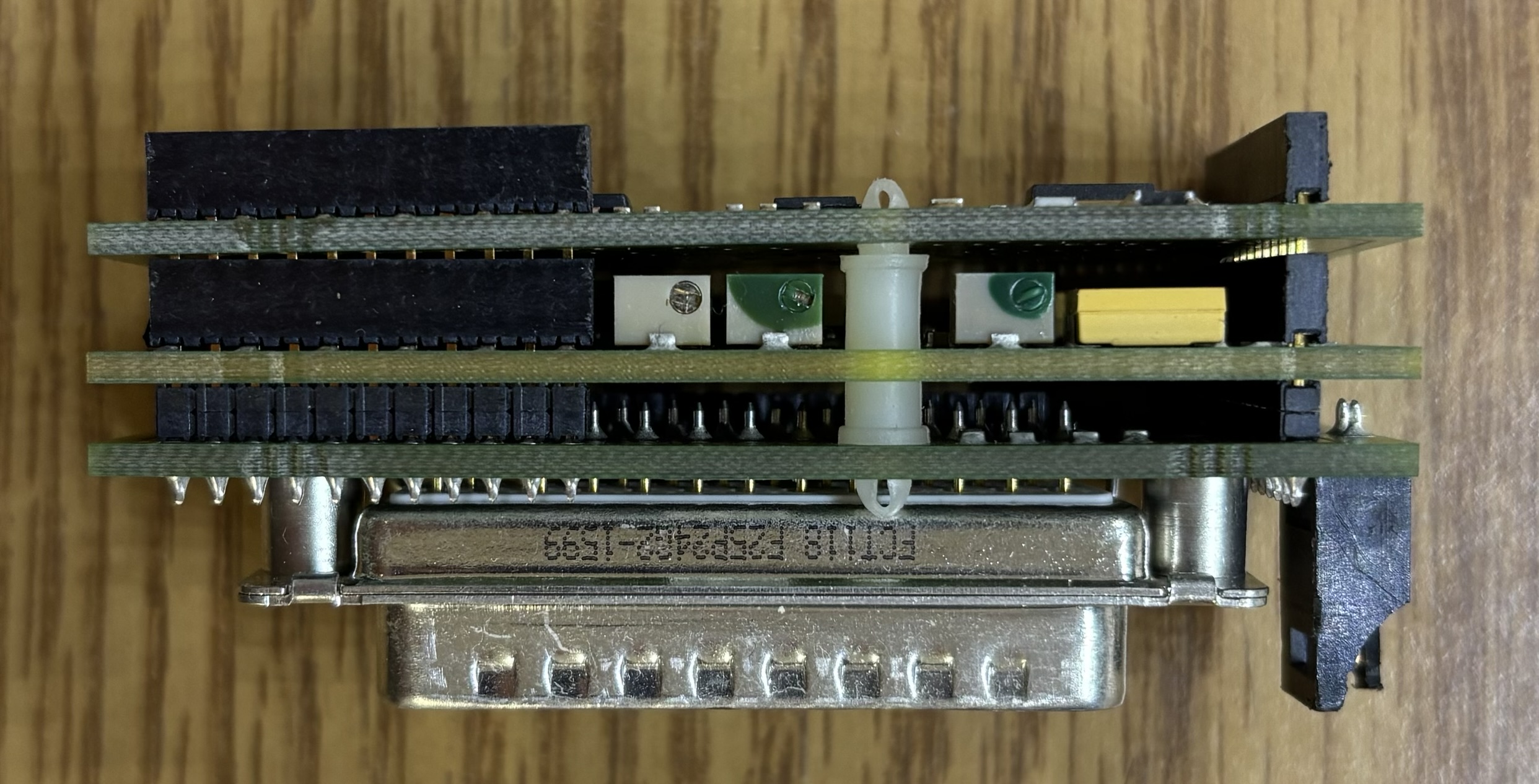
The PM is comprised of three individual boards. Two Single-row pin header connectors extend from the first board through to the last one, passing directly through the center circuit board. Below is an image of the front (component) side of all three PM boards.
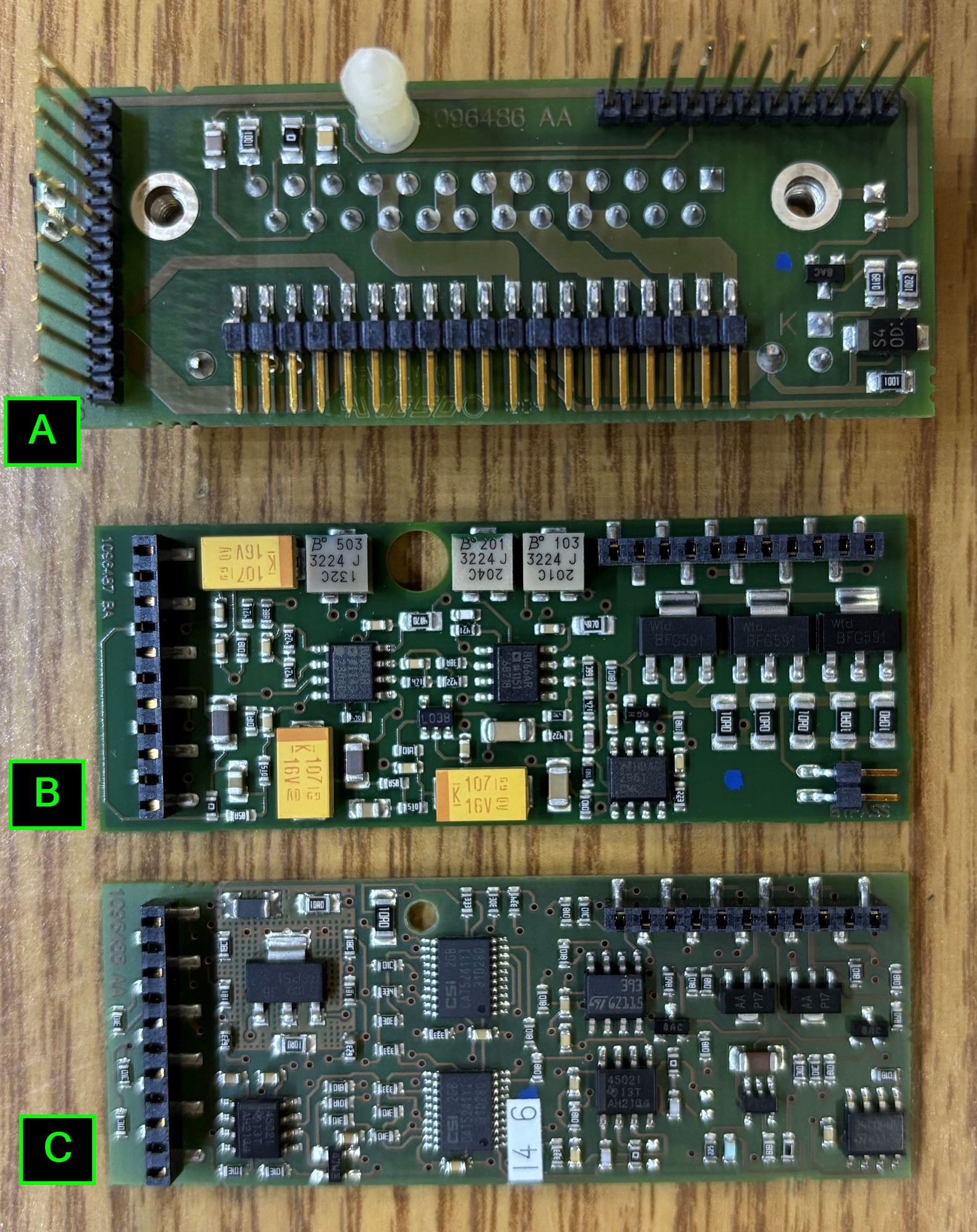
Below is an image of the back side of PM boards.
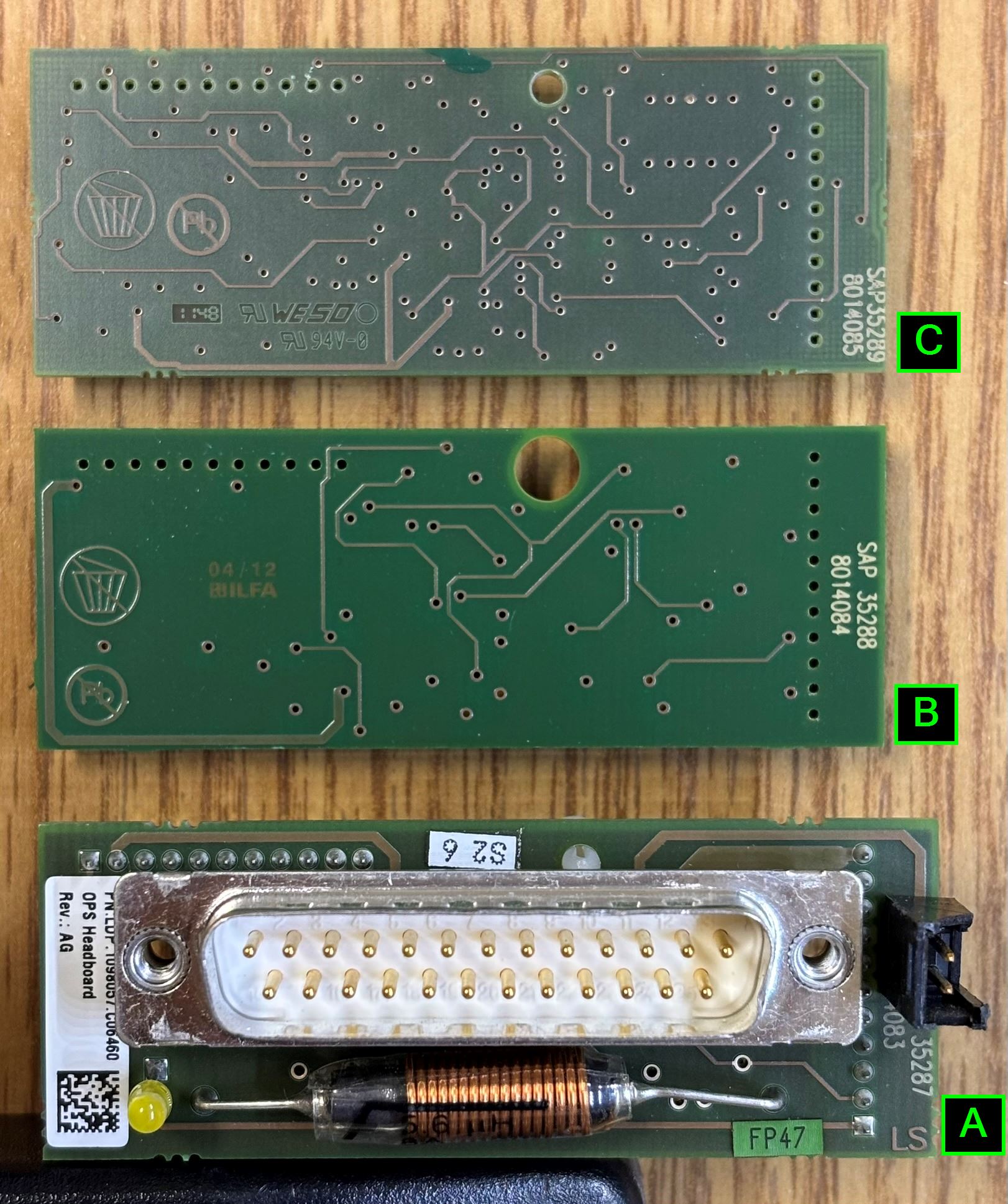
Breaking down the boards individually, we'll start with board A. This is the rearmost board that includes the DB-25 interface connector. This board has very little active circuitry and is primarily used to distribute power to the components within the laser head, and digital signals to the other boards that make up the PM. Notably, there is a 5.6 uH axial inductor located below the DB-25 connector. This inductor appears to be related to pump diode protection. The board contains 3 different single-row pin headers. Two of which extend through the other PM boards, and the bottom pin header connects to the optical baseplate. Other components on board A include the laser head power LED and fan connector. We have identified the single row header pins that mate to the single row pin header connector on the baseplate. Refer to the image of the base plate for pin functions.
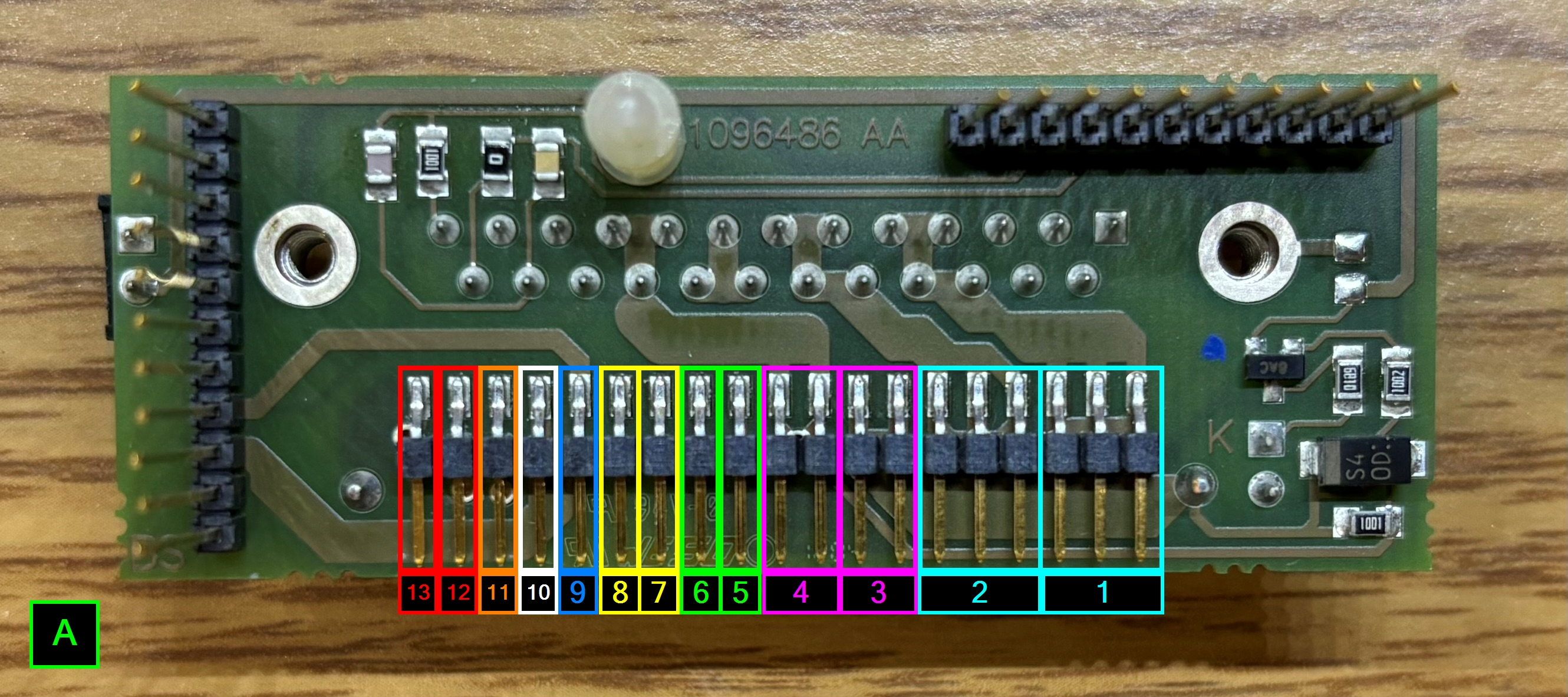
Next is board B. This is the middle board that gets sandwiched between boards A and C. It contains a significant amount of active circuitry.
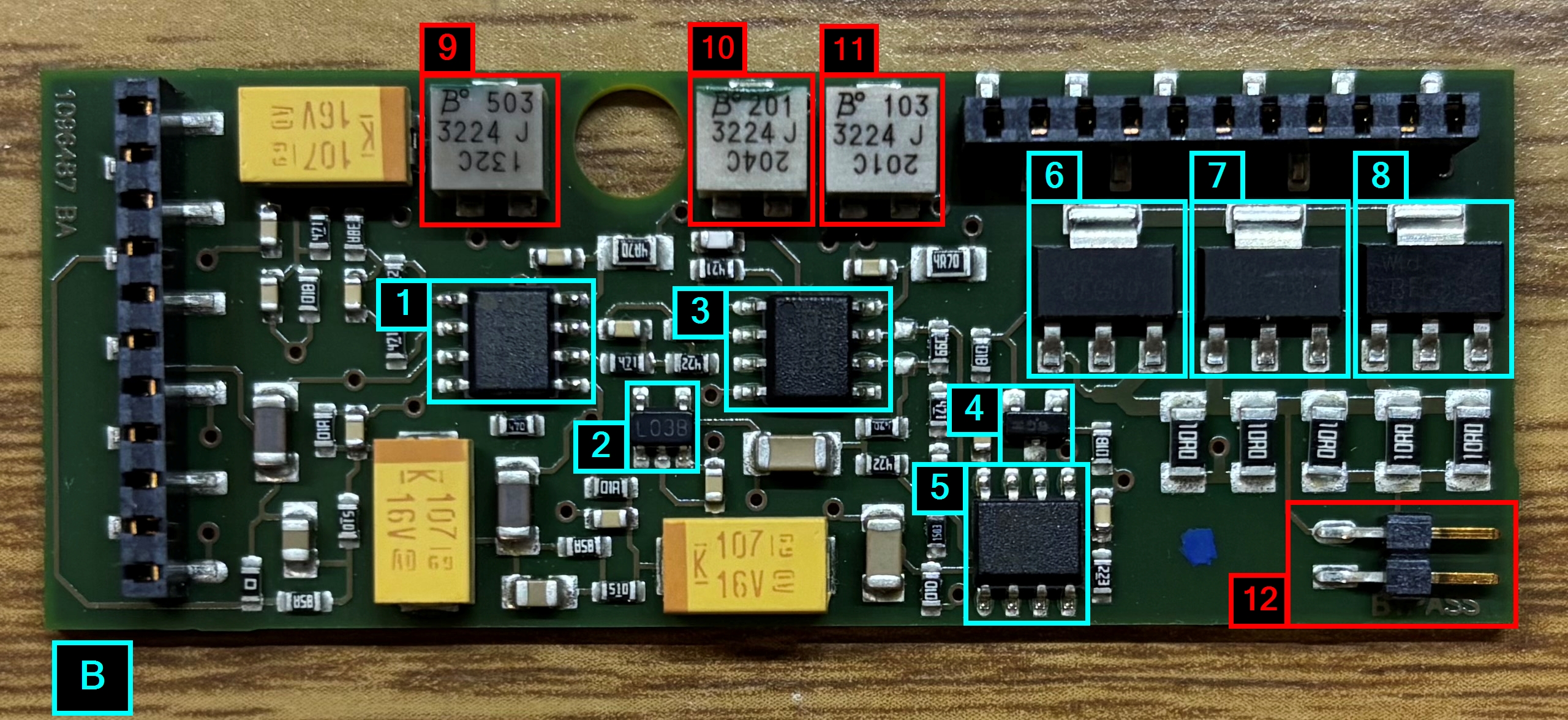
| LABEL | PART ID | DESCRIPTION | PURPOSE |
|---|---|---|---|
| 1 | AD8002AR | current feedback amplifier | diode current monitoring |
| 2 | LP2981IM5-5.0 | linear voltage regulator | |
| 3 | AD8066AR | high performance operational amplifier | |
| 4 | ELM990581BC | linear voltage regulator | |
| 5 | LP2951CM | linear voltage regulator | |
| 6 | BFG591 | NPN 7 GHz wideband transistor | |
| 7 | BFG591 | NPN 7 GHz wideband transistor | |
| 8 | BFG591 | NPN 7 GHz wideband transistor | |
| 9 | 3224J | potentiometer | |
| 10 | 3224J | potentiometer | |
| 11 | 3224J | potentiometer | |
| 12 | BYPASS JUMPER | UNKNOWN |
Lastly is board C, which contains multiple interesting components which include a couple of digital potentiometers and an EEPROM.
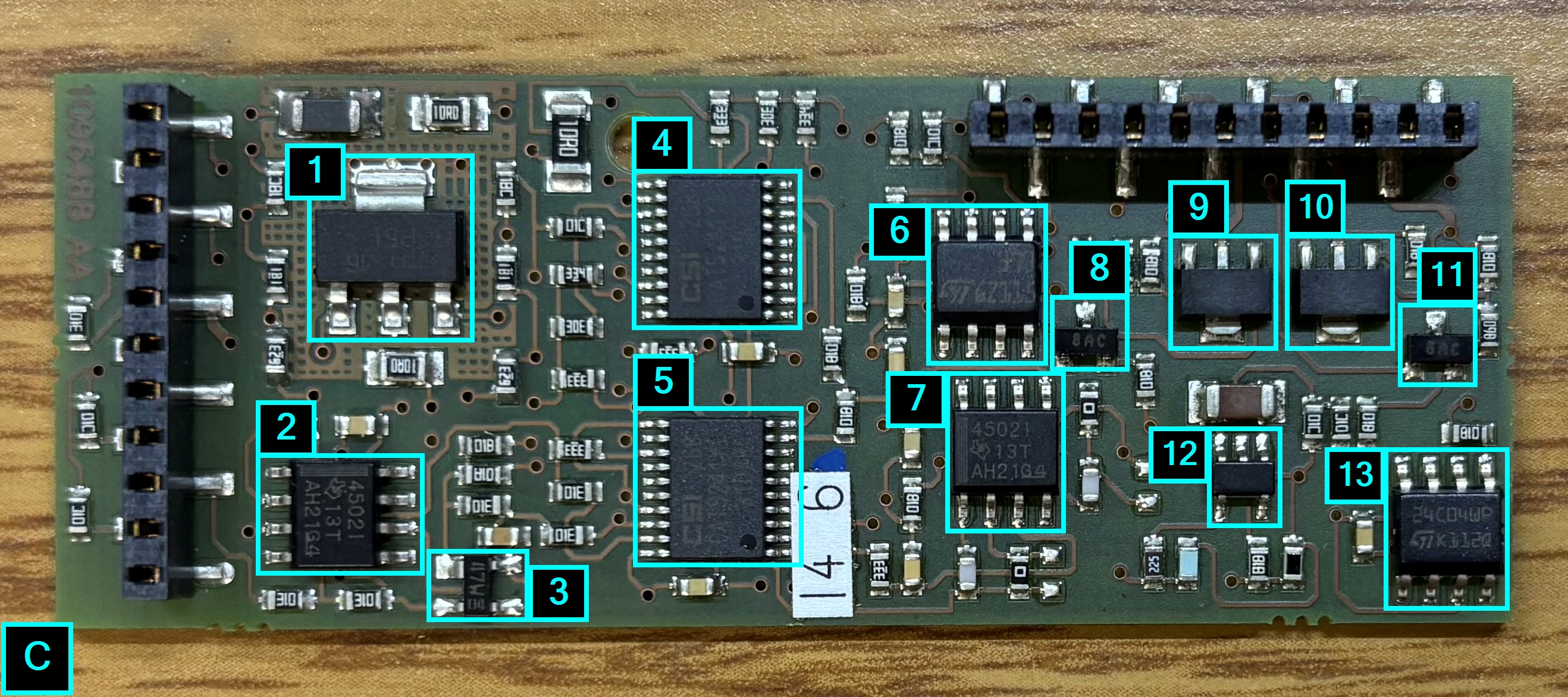
| LABEL | PART ID | DESCRIPTION | PURPOSE |
|---|---|---|---|
| 1 | BCP51 | PNP medium power transistor | |
| 2 | UNIDENTIFIED | UNKNOWN | |
| 3 | BAS40-07 | general purpose schottky diode for high speed switching | |
| 4 | CSI CAT5241 | four digital POTs with integrated control logic and 16 bytes of EEPROM memory | |
| 5 | CSI CAT5241 | four digital POTs with integrated control logic and 16 bytes of EEPROM memory | |
| 6 | LM393 | low power dual voltage comparator | |
| 7 | UNIDENTIFIED | UNKNOWN | |
| 8 | BC846CMTF | NPN epitaxial silicon transistor (needs confirmation) | |
| 9 | XC61FN4152P | voltage detector IC | |
| 10 | XC61FN4152P | voltage detector IC | |
| 11 | BC846CMTF | NPN epitaxial silicon transistor (needs confirmation) | |
| 12 | UNIDENTIFIED | UNKNOWN | |
| 13 | ST24C04 | 4 kbit serial I2C bus EEPROM with user-defined block write protection | system ID and parameter storage |
We were able to de-solder and read the raw hex data from the EEPROM. Unfortunately, we were unable to make any sense of it when we converted it to ASCII. Click the following link to examine the dump for yourself, and please let us know if you can make sense of the data.
Sapphire OEM Controller
We believe that most controllers should be capable of driving compatible models of Sapphire laser heads. All the information and parameters specific to the optical components within the head are stored on the personality modules EEPROM. Additionally, the OEM controller is very similar across Sapphire laser head models, with only minor changes that could just be different revisions. However, we have not been able to prove exactly how cross compatible heads and controllers are, the OEM controller may contain critical head operating parameters as well. Perhaps it’s more about Coherent being able to program a new controller if required.